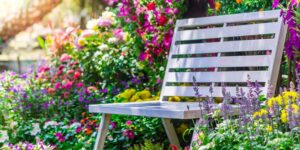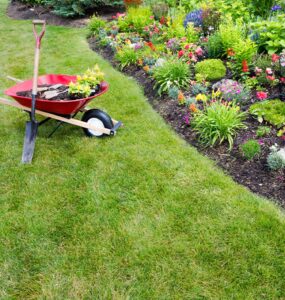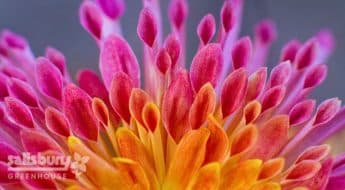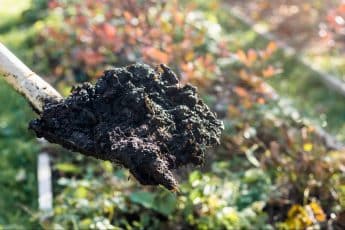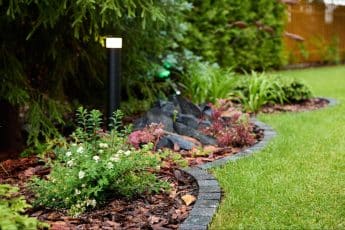
The “Other” Pollinators
By: Rob Sproule
Hoverflies
Butterflies
Other Bees
We’ve heard about the honeybees. But what about the other garden superstars giving us apples and strawberries and cucumbers? It’s easy to attract them and they bring a few surprising side benefits, too.
“The busy bee has no time for sorrow.”
– William Blake
By now, we all know that honeybees are not only awesome, but in trouble, too. We also know that there’s a big difference between “bees” and “wasps“. But what about all the other pollinators? While honey bees are native to Europe, we have a host of native, albeit often less photogenic, pollinators that deserve some recognition.
Hoverflies:
You’ve seen them, and they’ve probably frightened you, a little. Hoverflies are bee and wasp mimics, usually only distinguishable from wasps once they land. Unlike wasps, they neither sting nor bite. They look fierce to make potential predators think twice. The heat of our bodies, and our sweat, tends to attract them. You’ll probably jump when you feel something on your shoulder and see a “˜wasp’. Try to look closer (if it were a wasp he would have stung you already), and see if it’s thicker than your average wasp. He’s probably just there for a lick of salt.
Hoverflies are garden workhorses, pollinating everything but preferring fruit and berry crops (the stuff that really matters). Did I mention that many species eat aphids, mealy bug, and cabbage worms? They’re a win-win, but they’re also a fly that looks like a wasp, so they lose the media battle. Hoverflies love sweet alyssum, bachelor buttons, and most herb blooms (especially catnip, oregano, and chives). Plant some of those, don’t spray chemicals, and you may just get some free pollination and pest control.
Butterflies:
As gorgeous as they are to have around, butterflies (and moths) help pollinate, to boot. While not as efficient as bees and hoverflies, their long tongues allow them to pollinate flowers that bee can’t reach. To attract butterflies, plant old fashioned annuals and perennials (they often don’t recognize the trendy new stuff). Best varieties include:
“¢ Alyssum
“¢ Aster
“¢ Butterfly bush
“¢ Calendula
“¢ Cosmos
“¢ Daylily
“¢ Delphinium
“¢ Dianthus
“¢ Hollyhock
“¢ Lavender
“¢ Liatris
“¢ Marigold
“¢ Nasturtium
“¢ Oregano
“¢ Phlox
“¢ Purple coneflower
“¢ Sage
“¢ Shasta daisy
“¢ Stonecrop
“¢ Verbena
“¢ Yarrow
“¢ Zinnia
You’ll want to provide some food and water. Anything from birdbaths to puddles work, and a butterfly feeder with sugar water will keep them coming. Give them shelter from predators. Butterflies spend a lot of time hiding, so leave some overgrown perennials, a section of tall grass,
Learn more about other pollinators, with Alberta’s Best Gardening Blog
Other Bees:
Honeybees make the sweet stuff, and they get the press because they live in massive, highly visible hives. Like a surprising number of our most recognizable critters, they aren’t native and were imported from European settlers. Meanwhile, hundreds of native bee species are doing their diligence. Unlike honeybees, most of them are either solitary or live in much smaller communities.
Bumblebees: Hailing from the genus with the coolest name ever (Bombus), these furry fat flying critters seem to deft physics. They’re efficient pollinators, though prefer flowers with tubular flowers (like blueberries) for their long tongues. Unlike honeybees which live 50,000 strong, bumblebees prefer quainter communities of a few hundred. They often nest in the ground and produce only enough of a honey-like substance to eat themselves. Contrary to myth, bumblebees don’t die after stinging (that only applies to honeybees). But they will only sting if extremely agitated or frightened (you pretty much have to grab one and squeeze it).
Mason Bees: These extraordinary bees have come into fashion recently, and are the ones living in the bee houses that look like birdhouses modified with little tubes. They live solitary lives, one bee per “tube”, and build a muddy home inside to lay their eggs. Masons are incredibly efficient pollinators, hitting many more flowers per day than honeybees (although there are far fewer of them). They lack bees’ distinctive yellow markings, and look like houseflies at first glance until you see that their “bee-like” body.


